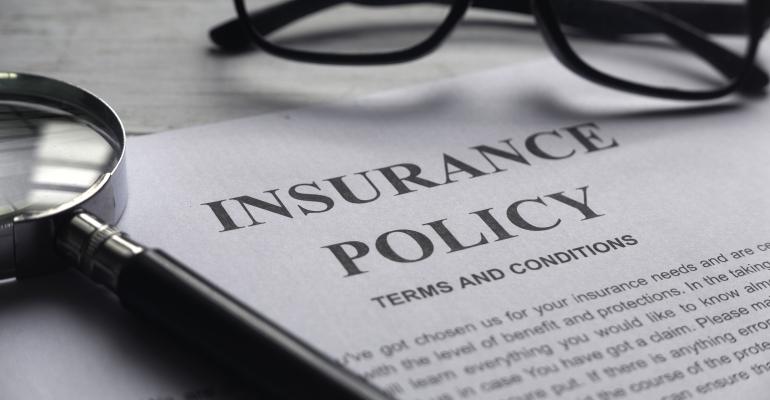Many input costs are starting to cool for restaurant operators (finally) and 2024 could therefore be our first normal year this decade. Or, “normal” as defined in a post-Covid world …
Of course, there are always outliers. The impact of AB 1228 in California – raising hourly QSR wages to $20 – will squeeze margins in that state and could potentially trickle elsewhere. Beef prices remain stubbornly high. And then there’s the weather.
No one can really predict the weather with 100% accuracy and for businesses that rely on foot traffic and bustling consumers in general, that can be a challenge. Consider Shake Shack’s Q3 as an example here. CFO Kate Fogerty estimated that a “rainy East Coast and hurricane in Southern California” represented a loss of approximately $500,000 in sales for the company.
Triple-digit heatwaves during the summer also heavily impacted restaurants. OpenTable data shows that seated diner traffic in Texas was down up to 5% in August 2023 versus August 2022, for instance. During a heatwave in Los Angeles in October, McDonald’s employees staged a walkout to protest extreme conditions, compromising operating hours. And in Arkansas, local restaurants were forced to scale back hours during a summer heatwave.
These extreme weather conditions exacerbated by climate change are expected to continue if not accelerate. According to research published earlier this year in the journal Climactic Change, up to 1.8 billion workforce hours (about 11 hours per U.S. worker) could be lost annually throughout the next three decades due to extreme heat caused by climate change.
As such, Technomic has listed “extreme weather” as one of its predictions for the restaurant industry in 2024, noting: “The growing frequency and intensity of extreme weather events, such as heat waves, storms and cold snaps, will continue to affect restaurant sales and traffic.”
These extreme weather events could be further fueled by El Niño in 2024. According to the National Oceanic and Atmospheric Administration, that means warmer oceanic waters will push the Pacific jet stream to move south of its otherwise neutral position. Typically, that means dryer and warmer conditions in the northern U.S. and Canada, and wetter than usual conditions – and increased flooding – in the south.
Because of these increasingly extreme occurrences, property insurance rates and availability have become a major challenge. In fact, Tim Smith, senior vice president and National Hospitality Practice director at IMA Financial Group, an independent insurance broker, said today’s insurance market is the toughest in his 30-year career managing risk for hospitality companies.
What’s making it tough?
“Property insurance rate hikes are primarily due to the unheard-of number of catastrophic (CAT) weather events, which Moody’s estimates averaged $100 billion in losses in the past five years,” Smith said. “Finding insurance carriers is more complex than ever before. As many know, carriers like State Farm pulled out of the Florida market. Still, coverage is more challenging to attain in most weather-affected states, and the number of regions experiencing CAT events is growing. Only when weather events subside will finding insurance carriers to write property insurance be easy.”
To help control costs within a restaurant’s four walls, Technomic recommends kitchen reconfigurations, energy-saving equipment, misters and fans, and upgraded HVAC systems and windows. Additionally, consider menu updates in the summer, including dishes that require little heat and a more comfortable back-of-house setting.
“And changing climates will require operators to anticipate an impact on item availability, taste and quality,” Technomic notes. “Which will lead to diversifying sources and products.”
General liability also increases
Property insurance isn’t the only pressure operators are facing on the insurance side of things. General liability claims are also increasing and, therefore, becoming more costly. Smith said the tight labor market is driving some of these increases.
“We’ve seen a lack of training as restaurants and hotels lost many of their veteran staff during the COVID lockdowns and had to fill positions with new, less experienced employees. As a result, locations have seen costly ‘premises liability’ claims from customers,” he said.
Those claims range from a trip and fall due to a poorly mopped/dried floor, to improper food handling to customer service issues. Smith said the environment is more litigious than it’s been in the past, intensified by social media, which has driven more claims.
In other words, insurance rates across the board are likely to continue on an upward trend. Could operators find opportunities with leveraged buying pools? Could franchisors negotiate insurance programs for franchised restaurant groups to leverage a buying force in the marketplace?
“Restaurateurs who think differently and plan appropriately can manage their insurance costs with thoughtful packages and sound operations even before a claim is made,” Smith said.
Contact Alicia Kelso at [email protected]





